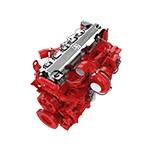Nov . 13, 2024 10:17 Back to list
what happens when brake drums get hot
What Happens When Brake Drums Get Hot
Brake systems are critical components of any vehicle, as they ensure safety by allowing a driver to slow down or stop the vehicle when required. Among the various types of braking systems, drum brakes are widely used, especially in older vehicles and certain types of trucks. Understanding how brake drums function and the implications of overheating is essential for maintaining vehicle safety and performance.
When a driver applies the brakes, friction is generated between the brake shoes and the interior surface of the brake drum. This friction converts the kinetic energy of the moving vehicle into thermal energy, causing the brake drum to heat up. Under normal operating conditions, brake drums can tolerate a significant amount of heat without adverse effects. However, excessive heat generation can lead to a range of problems that compromise braking efficiency and safety.
What Happens When Brake Drums Get Hot
Another consequence of overheating brake drums is thermal expansion. As the metal components of the brake drum heat up, they expand. If the temperature rises too quickly, the expansion can become uneven, potentially leading to warping or deformation of the drum. A warped brake drum can cause vibrations, uneven wear of the brake shoes, and an overall reduction in the braking effectiveness. In severe cases, this may even require the replacement of the brake drum and shoes, leading to additional repair costs.
what happens when brake drums get hot

Overheated brake drums can also result in the degradation of the brake shoe material. Many brake pads and shoes are made of organic or semi-metallic materials that can wear out under extreme heat. If the brake shoes become too hot, the material can begin to break down, leading to reduced friction and compromised braking performance. In some cases, the intense heat can cause the brake lining to glaze, forming a hard, smooth surface that reduces the effectiveness of the brakes even further.
Additionally, the heat generated by the brake drums can affect other components of the braking system. For example, the brake fluid in hydraulic brake systems can reach temperatures that cause it to vaporize, leading to “brake fluid vaporization.” This condition introduces air into the braking system, which can cause the brake pedal to feel spongy and increase stopping distances. Consequently, maintaining appropriate brake fluid levels and replacing old fluid when necessary is crucial for optimal braking performance.
Routine maintenance is essential to minimize the risk of brake drum overheating. Regular inspections can ensure that the brake system components are functioning correctly and that there is no excessive wear or damage. Additionally, ensuring that the brake drums are properly ventilated and not obstructed can help dissipate heat more effectively during braking. Upgrading to high-performance brake pads designed to handle higher temperatures can also enhance the system's efficiency and reduce the likelihood of overheating.
In conclusion, heated brake drums can lead to a range of performance issues, including brake fade, warping, and material degradation. These problems not only jeopardize the safety of the vehicle but also increase maintenance and repair costs. Awareness of the signs of overheating, coupled with regular maintenance, is critical for ensuring the safe operation of drum brake systems in any vehicle. By understanding the implications of heat on brake drums and taking proactive measures, drivers can maintain their braking efficiency and safety on the road.
-
Scania Brake Drums: OEM Quality for Optimal Safety & Durability
NewsAug.16,2025
-
R.V.I: Advanced Remote Visual Inspection for Precision
NewsAug.15,2025
-
Discover HYUNDA: Innovative Vehicles, Equipment & Solutions
NewsAug.14,2025
-
R.V.I: Unlock Advanced Insights & Real-time Performance
NewsAug.13,2025
-
Kamaz Brake Drum: Durable & Reliable for Heavy Duty Trucks
NewsAug.12,2025
-
Heavy Duty Iveco Brake Drum - Premium Quality & Safety
NewsAug.11,2025
